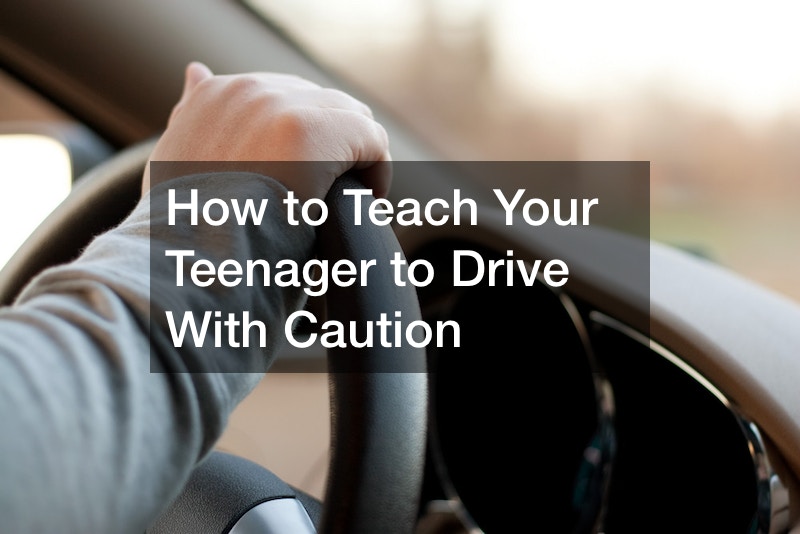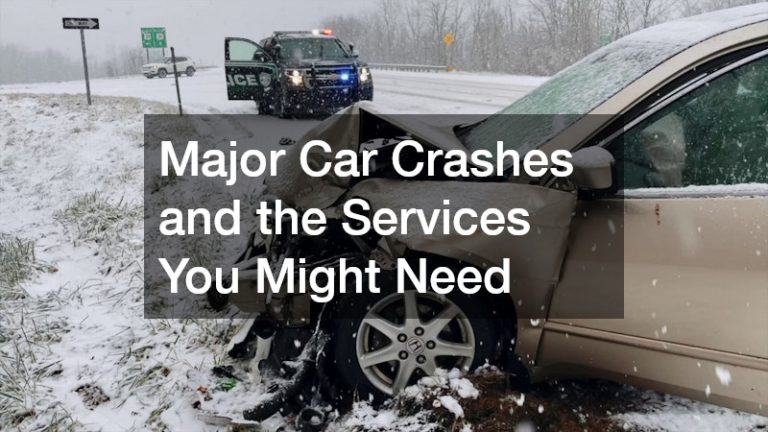

Teaching your teenager how to drive can be a roller-coaster of several emotions – exciting, worrisome, and nerve-wracking, to name a few. As a parent, your primary concern is getting your teen to operate a vehicle safely and drive with caution. From the basics of buckling up and properly adjusting the mirrors to being able to finally get their license, there are several steps to cover in between. Here are some tips and strategies to help ease your stress and worries while teaching your teenager to drive with caution.
Start With a Tour of the Vehicle
It goes without saying you must start by covering the explanatory basics. This includes adjustment of the driver seat and the rearview and side mirrors to suit their comfort for safe driving. Before you hit the road, explain all the features and controls of the car. Explain the turn signals, wipers, parking brakes, gas and brake pedals, and dashboard controls. Additionally, they must also know where they must place their hands on the steering wheel. Once you’re done explaining all the basics, ask a few random questions to test your teen. They should be able to answer everything correctly before they put the key in the ignition.
Start With an Empty Parking Lot
There’s no better and safer place for your teen to drive with caution than an empty parking lot. For the first few lessons, find a sufficiently spacious parking lot that’s empty. You could drop by in the early morning hours to find an empty space that’s otherwise occupied. Start your teen off with practice for applying the gas and brakes, driving straight, taking small turns, and backing up. As they get more comfortable with these steps, take it up a notch. You could have your teen pulling in and out of the parking spot next. It’s vital that they learn how much foot pressure they must apply on the brakes to stop and how much they must move the steering wheel to turn. Get them to check the mirrors, look ahead and to the sides, and keep a safe space around the vehicle at all times.

Proceed to Low Traffic, Low-Speed Areas
You can’t have your teen driving in an empty parking lot for more than a couple of days. They’ll be eager to hit the road. Once your teen is comfortable with the car’s basic operation, you can slowly take the training to relatively quiet streets with low traffic and fewer pedestrians. Early mornings are a great time to get empty roads in most neighborhoods – ideal for teaching your teen how to drive with caution. Start by getting your teen to drive on one side of the road. They must be able to pull up at stop signs (even if the street is empty) and anticipate cars exiting driveways. It’s safer to stick to roads with lower speed limits, under 35 mph. Don’t forget to emphasize that the posted speed limits are the acceptable maximum speed in excellent driving conditions. When there’s heavy traffic, poor weather, or pedestrian crowds, your teen should drive even slower.
Drive on the Highway
Here’s the scary part, both for you and your teen. Driving on a multi-lane, busy highway can be exciting and overwhelming for your teen the first time. Before you head out onto the highway, explain to your teen what they can anticipate. From large trucks and higher speeds to interchanges and slowing or stopping traffic, they must understand what to expect on a highway. If possible, start them out by driving at quieter times of the day. This helps them practice cautiously merging into traffic, maintaining their lane, and increasing speed gradually (but within safe limits). They’ll also have to maintain safe following distances during rush-hour traffic. Only when both of you are comfortable, consider moving to busier traffic scenes gradually.
Different Weather Conditions
It’s important for your teenager to learn how to drive with caution in different weather conditions, although it could get challenging. It would be best if you could get your teen to practice driving in snow, rain, and fog. You must guide them on how to adjust their driving according to the conditions. Commonly, they’ll have to slow down, maintain increased following distance, or turn on their headlights or even fog lights in certain situations.
Practice Nighttime Driving
Apart from driving on highways and in different weather conditions, another scenario you must prepare your teen for is nighttime driving. Considering that driving at night can be challenging, especially for new drivers, you must exercise extra caution. However, seeing as it’s essential your teen learns how to drive at night as well as during the day, you must teach them how. Explain to them the importance of using headlights while driving at night and also avoiding looking directly at oncoming headlights. It’s best to practice driving in low-traffic areas at night, before moving to busier roads.

Defensive Driving Techniques
When your teen encounters any potential hazards on the road, they must be able to take the necessary steps to avoid them. Part of being able to drive with caution is for your teen to scan the road ahead, frequently check their mirrors, and always be aware of their surroundings. Ensure your teen understands and follows, leaving plenty of space between themselves and other vehicles. They must be prepared at all times to brake or swerve to avoid a possible collision. To do this, the presence of the mind is essential; something that comes progressively.
Proper Vehicle Maintenance
A very important part of teaching your teen how to drive with caution is ensuring that the vehicle is in good working condition. Teach your teen how they can perform basic maintenance tasks, like checking oil levels and tire pressure. They must also be able to identify any warning signs of potential problems, including warning lights on the dashboard or strange noises. Whether it’s a car wheel repair or transmission repair, your teen must be able to identify the signs first before taking the vehicle for the repair service. It wouldn’t hurt to teach them how they can swap a flat wheel with the spare in the car. It might prove especially helpful if they happen to be stuck in the middle of nowhere at any time.
Meanwhile, it might help for you to take note of the nearest auto body shop too. If your vehicle is damaged, dented, or scratched in the process of teaching your teen to drive, you’ll likely need the services of an auto body shop. Finally, explain to them about looking out for the emptying fuel indicator. Map out oil and gas supplier locations within city limits for them to go for a fuel refill when required.
Car Insurance
Check with your insurer or look for car insurance policies that will cover a teen driver being taught to drive by a parent. Some auto insurance service policies provide coverage if the parent is a nominated driver. If your teen has a learner’s permit, consider adding them to your car insurance policy. This way, for any of their mistakes (except a few as they take to the road), like a car accident, collision, etc., you could simply file a claim with your insurance company. All related expenses will be paid for by your car insurance policy.
Safety Provisions in the Vehicle
There’s no denying it – when your teen is driving for the first time in their life, you can expect a few bumps along the road (metaphorically speaking). In the worst-case scenario that someone gets hurt minimally, it would help to have the safety necessities in the vehicle to attend to the injury. Consider keeping a first responder bag handy in the vehicle. It’s a great medical resource to provide immediate care for anything from minor wounds and burns to splints or severe immobilization. However, merely keeping one handy might not suffice. Your teen must also be aware of how to use the different items in case of an emergency.
Motor Vehicle-Related Laws
Having your teen drive with caution isn’t only about being able to safely navigate around roads. It’s also being aware of laws. Each state and territory has its own traffic rules or code, although most road rules are similar everywhere for uniformity purposes. Familiarize yourself and your teen with the accident injury law that’s designed to protect you if you or your vehicle is injured or harmed as a result of someone else’s act.

Stress on Responsible Driving
What’s one of the top causes of teen-caused road accidents? Believe it or not, the answer to this is a drunk driving accident. As a parent, you can’t stress this enough; people under 21 years must not consume alcohol or even drive after drinking. It’s illegal. Statistics for 2020 revealed that 29% of the driver aged between 15-20 years who died in motor vehicle crashes had been drinking. Moreover, 17% of the drivers in this age group involved in fatal vehicle crashes had a blood alcohol content higher than the permitted 0.08%.
Right from the first day that you teach your teen how to drive with caution, keep stressing about responsible driving. This means no alcohol, prescription or over-the-counter medications, marijuana, or other illicit drugs must be consumed during or before driving. It doesn’t end at that; using a cell phone while driving is almost as bad as drunk driving. Whether prohibited by the state or not, ensure that your teen understands that using their cell phone while driving often causes accidents. Also, tell them that if they absolutely must use their phone, they should pull off the road to a safe spot first. Discuss the dangers of distracted driving with your teenager. Ensure they understand the importance of staying focused on the road ahead.
Model Good Driving Behavior
Your teen will be observing your driving once they’ve started practicing. As a parent, you stand as your teenager’s biggest influence. When you model good driving behavior, your teenager will likely follow your lead. Always wear your seatbelt, obey the traffic rules, and practice safe driving habits. Avoid aggressive driving behaviors and road rage. Always prioritize safety over convenience. Remember, teens are prone to road rage (not to forget the raging hormones that lead them to it). When they experience their parent’s calm driving, they’re bound to practice the same.
Whatever Happens, Don’t Raise Your Voice
Expect some “oops” moments when you teach your teenager to drive. There’s no preventing them. But what you can control is your reaction to such events. Avoid raising your voice when instructing them or in the event of any collision. Teenagers get upset pretty easily and you raising your voice won’t help them drive any better. Rather than raising your voice, point out their mistakes or specific behaviors in a calm voice. That means, even if you manage to just avoid a crash or your teen is shouting at you, you must maintain your calm.

Consider the Alternative – Driver Education Course
Did you know that at least 31 states require teens to take driver’s education to get a license? It involves teens going through behind-the-wheel training and a certain amount of supervised driving hours. These driver’s ed programs might be taught in high schools, private driving instructors, or both. If you find teaching your teenager how to drive with caution too nerve-wracking, your next best bet is driver’s ed. Not only will they teach the current driver’s education concepts and curricula, but they’ll also encourage you to be readily involved in the process.
Teaching your teenager to drive with caution might seem overwhelming. But it needn’t be so. Start them off slow and gradually proceed only when you’re confident they’re thorough with whatever has been covered. It takes a lot of time and patience to teach someone how to drive. It’s essential to keep your emotions in check when you take up the responsibility of teaching your teen to drive. Always ensure safety comes first. If you feel like you aren’t up for the responsibility, there’s always driver’s ed.



